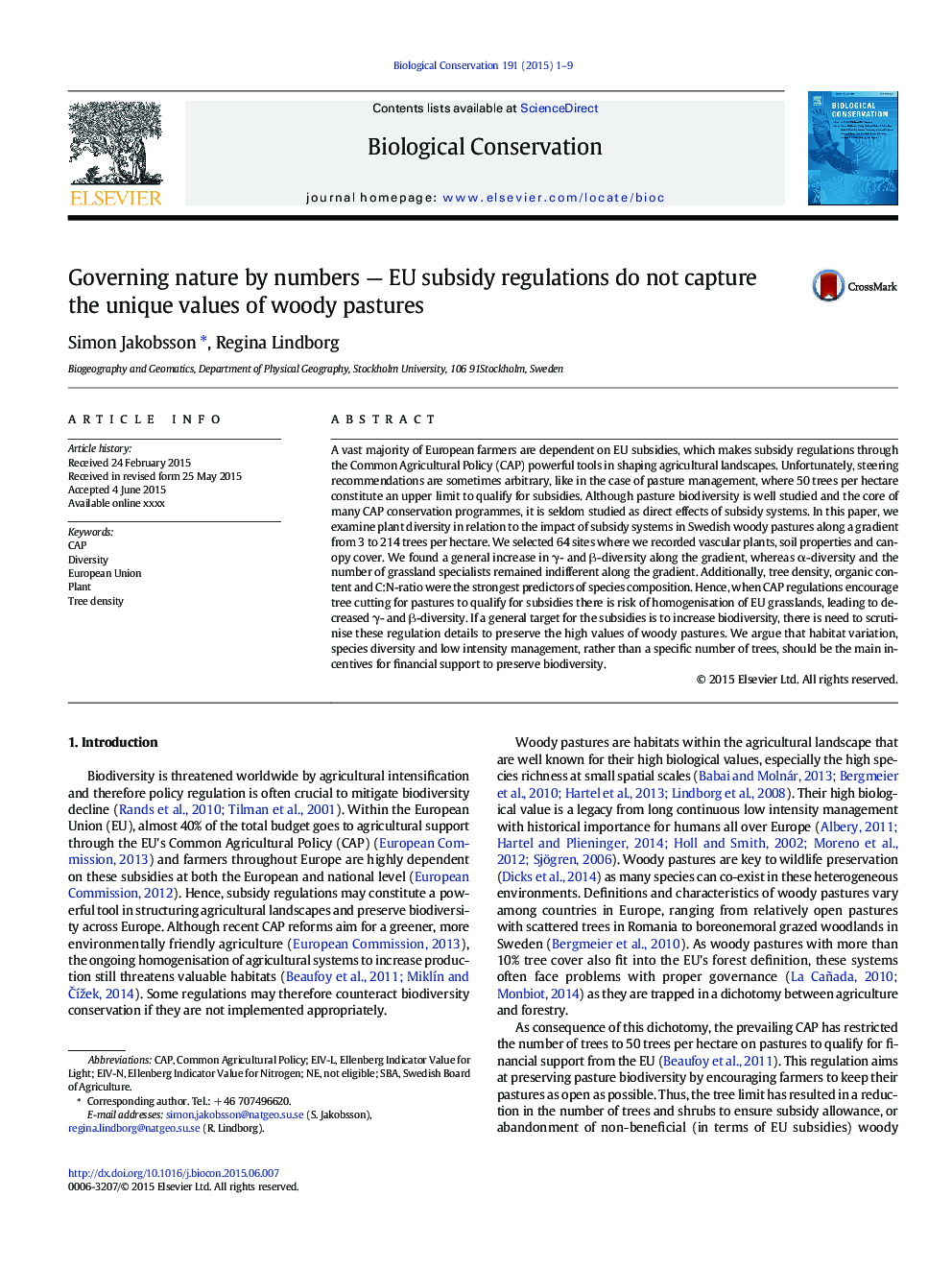| Article ID | Journal | Published Year | Pages | File Type |
|---|---|---|---|---|
| 6298903 | Biological Conservation | 2015 | 9 Pages |
Abstract
A vast majority of European farmers are dependent on EU subsidies, which makes subsidy regulations through the Common Agricultural Policy (CAP) powerful tools in shaping agricultural landscapes. Unfortunately, steering recommendations are sometimes arbitrary, like in the case of pasture management, where 50 trees per hectare constitute an upper limit to qualify for subsidies. Although pasture biodiversity is well studied and the core of many CAP conservation programmes, it is seldom studied as direct effects of subsidy systems. In this paper, we examine plant diversity in relation to the impact of subsidy systems in Swedish woody pastures along a gradient from 3 to 214 trees per hectare. We selected 64 sites where we recorded vascular plants, soil properties and canopy cover. We found a general increase in γ- and β-diversity along the gradient, whereas α-diversity and the number of grassland specialists remained indifferent along the gradient. Additionally, tree density, organic content and C:N-ratio were the strongest predictors of species composition. Hence, when CAP regulations encourage tree cutting for pastures to qualify for subsidies there is risk of homogenisation of EU grasslands, leading to decreased γ- and β-diversity. If a general target for the subsidies is to increase biodiversity, there is need to scrutinise these regulation details to preserve the high values of woody pastures. We argue that habitat variation, species diversity and low intensity management, rather than a specific number of trees, should be the main incentives for financial support to preserve biodiversity.
Related Topics
Life Sciences
Agricultural and Biological Sciences
Ecology, Evolution, Behavior and Systematics
Authors
Simon Jakobsson, Regina Lindborg,
